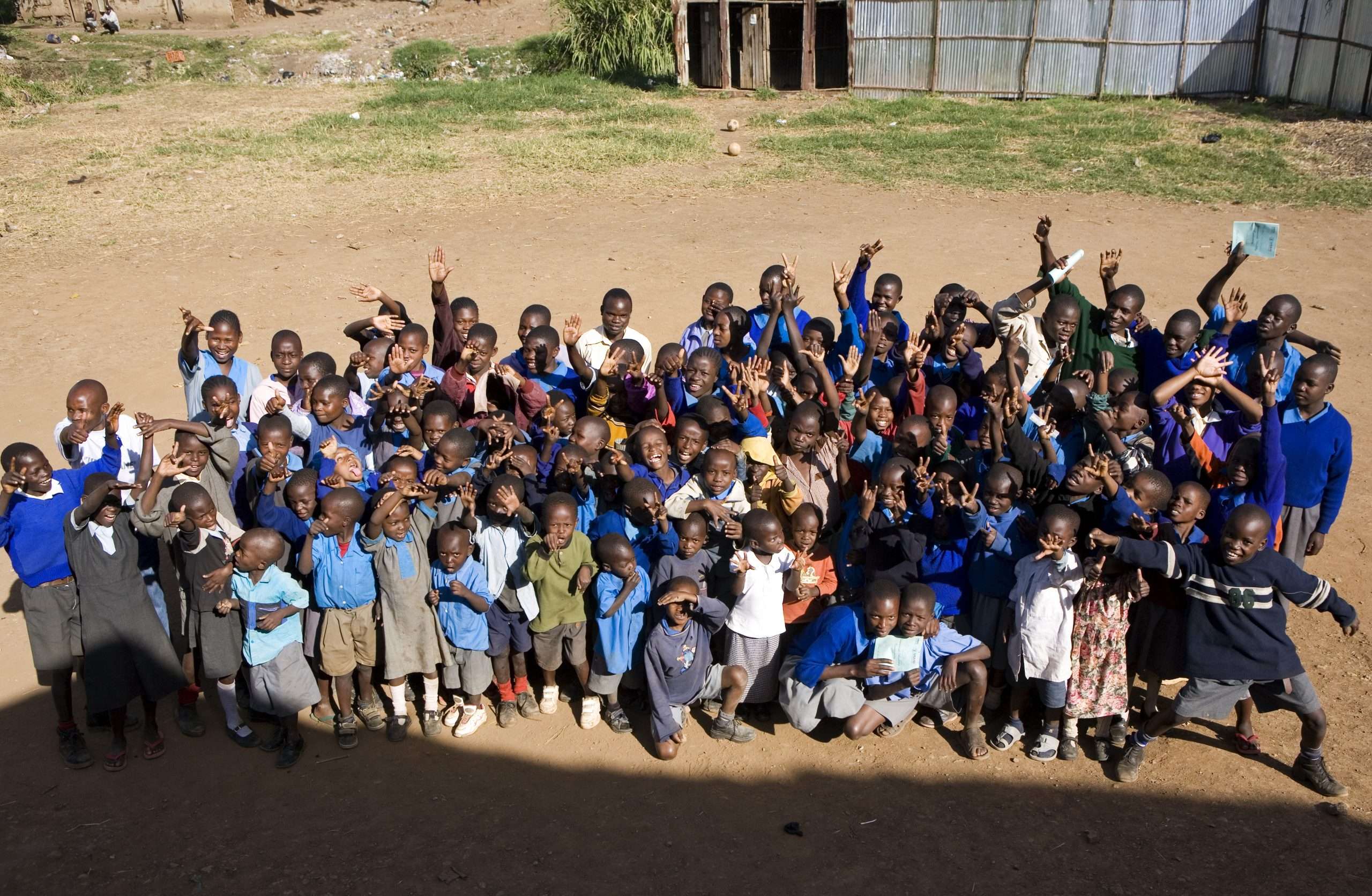
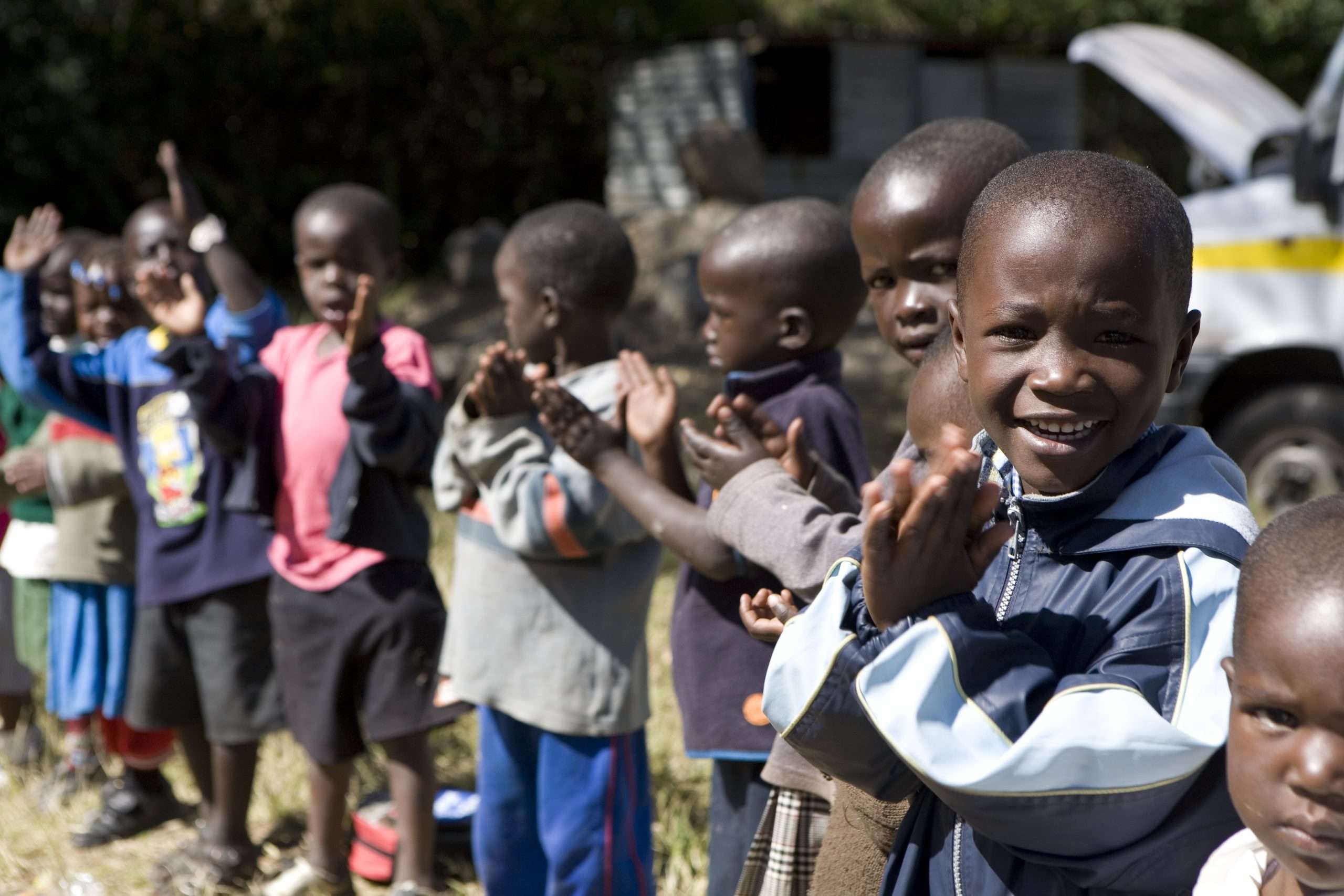
ongoing
Projects
On 23rd February 2003, the former US Ambassador to Kenya, Mr. Johnny Carson, officially launched the HWWK programs in Mukuru informal settlement. This marked the beginning of HWWK’s work in HIV prevention and working with youth. Since then, HWWK has grown and provided support to thousands of vulnerable youth, orphans and vulnerable children (OVC), women, truckers, and key priority populations in different parts of the country.
The beneficiaries have been reached through various programs including HIV prevention, care and treatment, general health awareness and disease prevention, education subsidies, and nutrition support. Other support programs include psychosocial support, shelter, vocational training, entrepreneurship training, support to access micro-finance initiatives, initiation of businesses, and linkage to the job market.
ongoing
Projects
On 23rd February 2003, the former US Ambassador to Kenya, Mr. Johnny Carson, officially launched the HWWK programs in Mukuru informal settlement. This marked the beginning of HWWK’s work in HIV prevention and working with youth. Since then, HWWK has grown and provided support to thousands of vulnerable youth, orphans and vulnerable children (OVC), women, truckers, and key priority populations in different parts of the country.
The beneficiaries have been reached through various programs including HIV prevention, care and treatment, general health awareness and disease prevention, education subsidies, and nutrition support. Other support programs include psychosocial support, shelter, vocational training, entrepreneurship training, support to access micro-finance initiatives, initiation of businesses, and linkage to the job market.
01.
DREAMS CONNECT Project
HWWK through a sub-grant from CIHEB received funding from the US Presidential Emergency Plan for AIDS Relief (PEPFAR) to implement an HIV prevention program among adolescent girls and young women through the Centers for Disease Control and Prevention (CDC).
The project is dubbed ‘DREAMS’ which means Determined, Resilient, Empowered, AS-free, Mentored, and Safe lives.
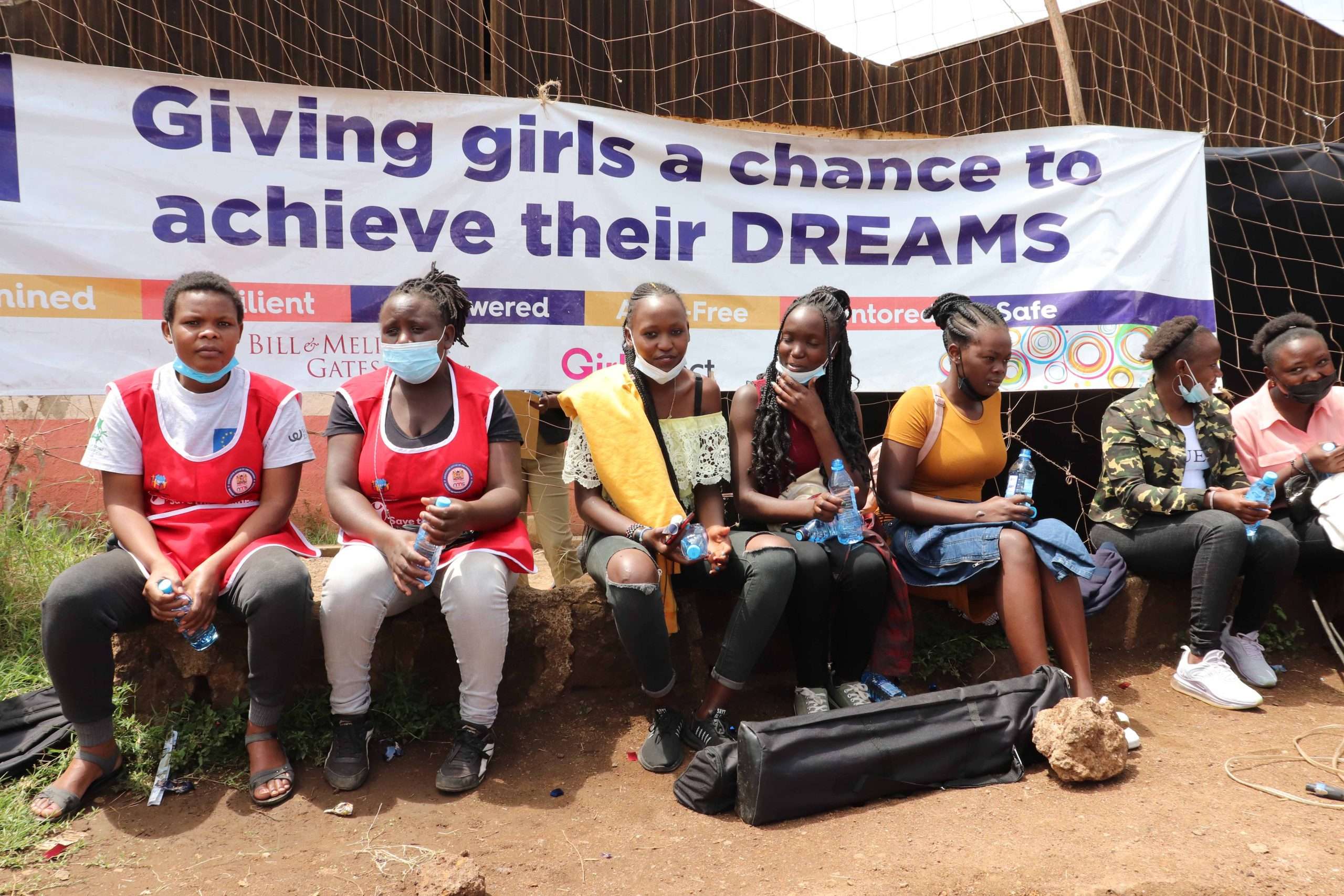
02.
Start Small Education (Elimu ya Vijana Tuelekeze) Project
HOPE worldwide Kenya (HWWK) through a sub-grant from CARE International in Kenya received funding from the Start Small Foundation through the CARE USA Crisis Response Campaign: East Africa Education Initiative, to implement a two (2) year project to mitigate the effects of COVID – 19 on education.
The project aims to ensure that adolescents (10-19 year old) in school stay in school and are able to transit to the next grades/classes or higher levels of education. The Project will do this by training teachers to provide mental health and psychosocial support to adolescents, empower adolescents with knowledge and skills on Adolescent Sexual and Reproductive Health (ASRH), life skills, financial literacy, and development of adolescent leadership competence skills.
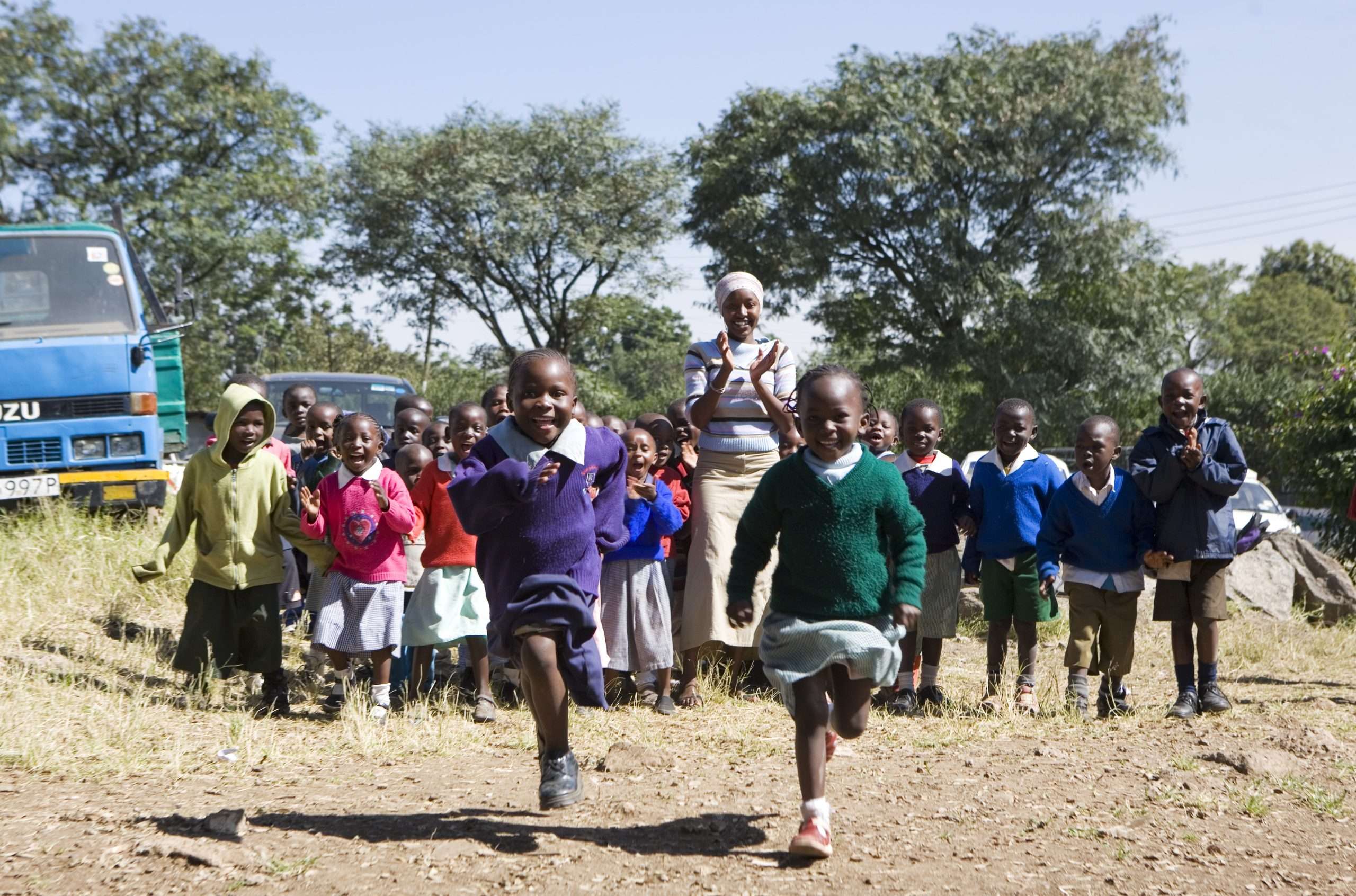
03.
UON CRISSP KP Project
HWWK is implementing an HIV prevention project to reach Key populations including Female Sex Workers (FSW) with their partners and Men who have Sex with Men (MSM). Funding is provided from the Presidential Emergency Fund for Aids Relief (PEPFAR) through a sub-grant from the University of Nairobi CRISSP project.
Project goal: To Increasing Access to and Availability of Sustainable, High Quality, Comprehensive Health and Structural Interventions among Key Populations and Priority Populations in Central, and Eastern Regions of the Republic of Kenya under the President’s Emergency Plan for AIDS Relief (PEPFAR)
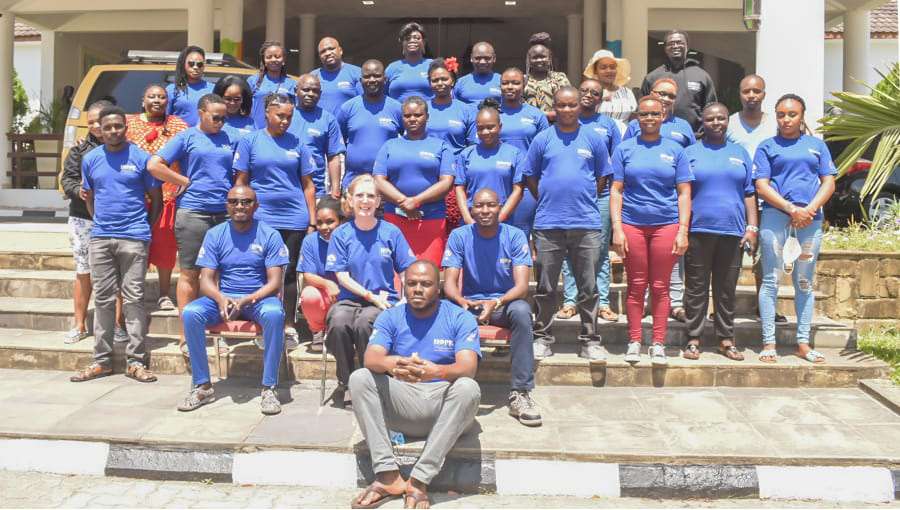
04.
SHE SOARS Project
HOPE worldwide Kenya (HWWK) received funding from Global Affairs Canada through CARE International in Kenya for the SHE SOARS Campaign. SHE SOARS is an acronym meaning:
- Sexual and reproductive Health and Economic empowerment (SHE)
- Supporting Out of school Adolescent Girls’ Rights and Skills (SOARS)
With an implementation period of seven (7) years, the project aims to empower and improve the Sexual and Reproductive Health and Rights of girls and young women, with specific emphasis on out-of-school adolescent girls.
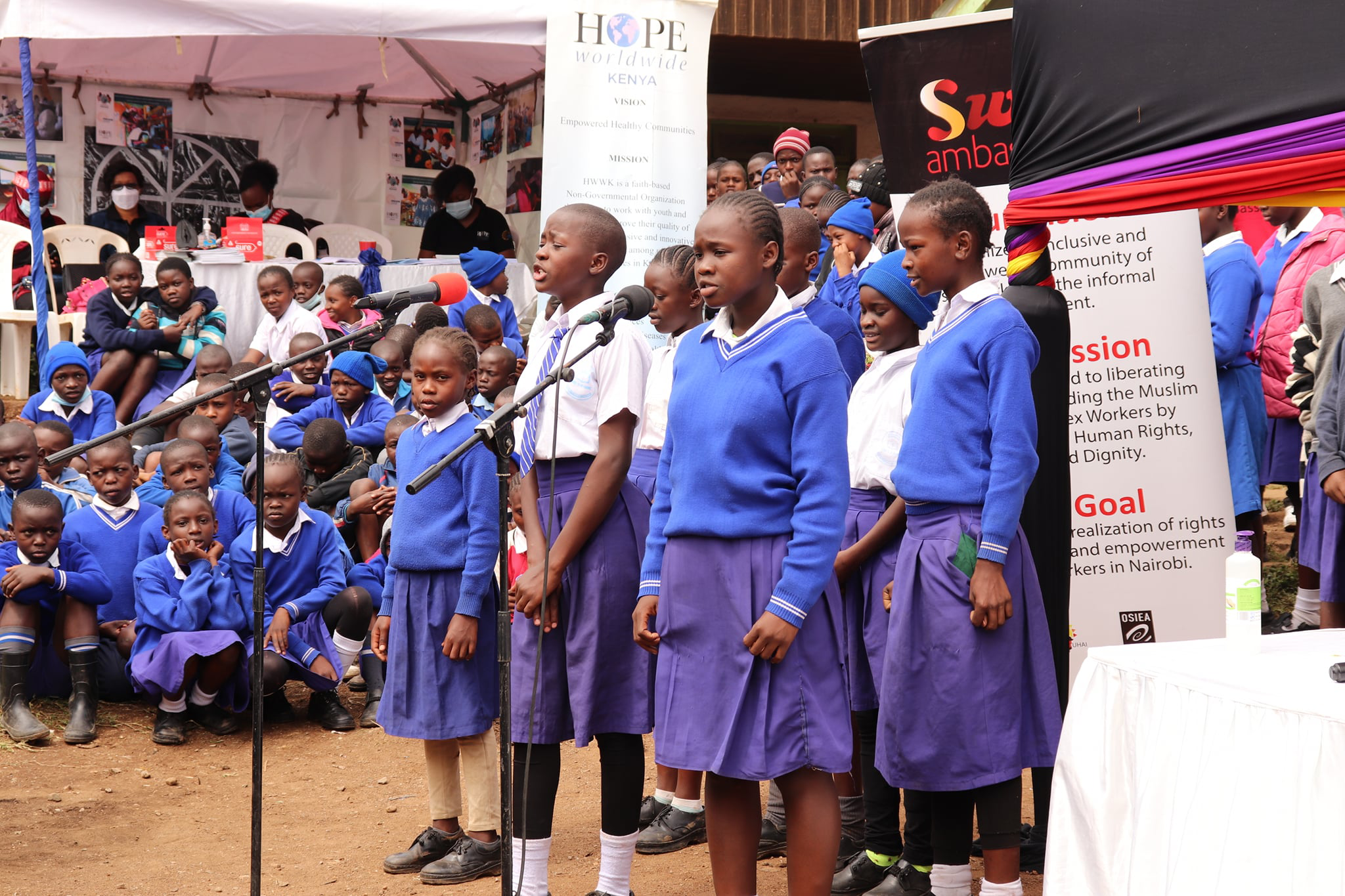
05.
Global Fund HIV Project
HWWK is implementing a HIV Global fund grant through a sub-grant from Kenya Red Cross Society under the New Funding Mechanism 3 (NFM3).
The grants key areas of interventions are:
- Increasing access and uptake of HIV prevention services and commodities
- Promoting community based approaches to HIV service delivery
- Improving initiation and adherence to treatment
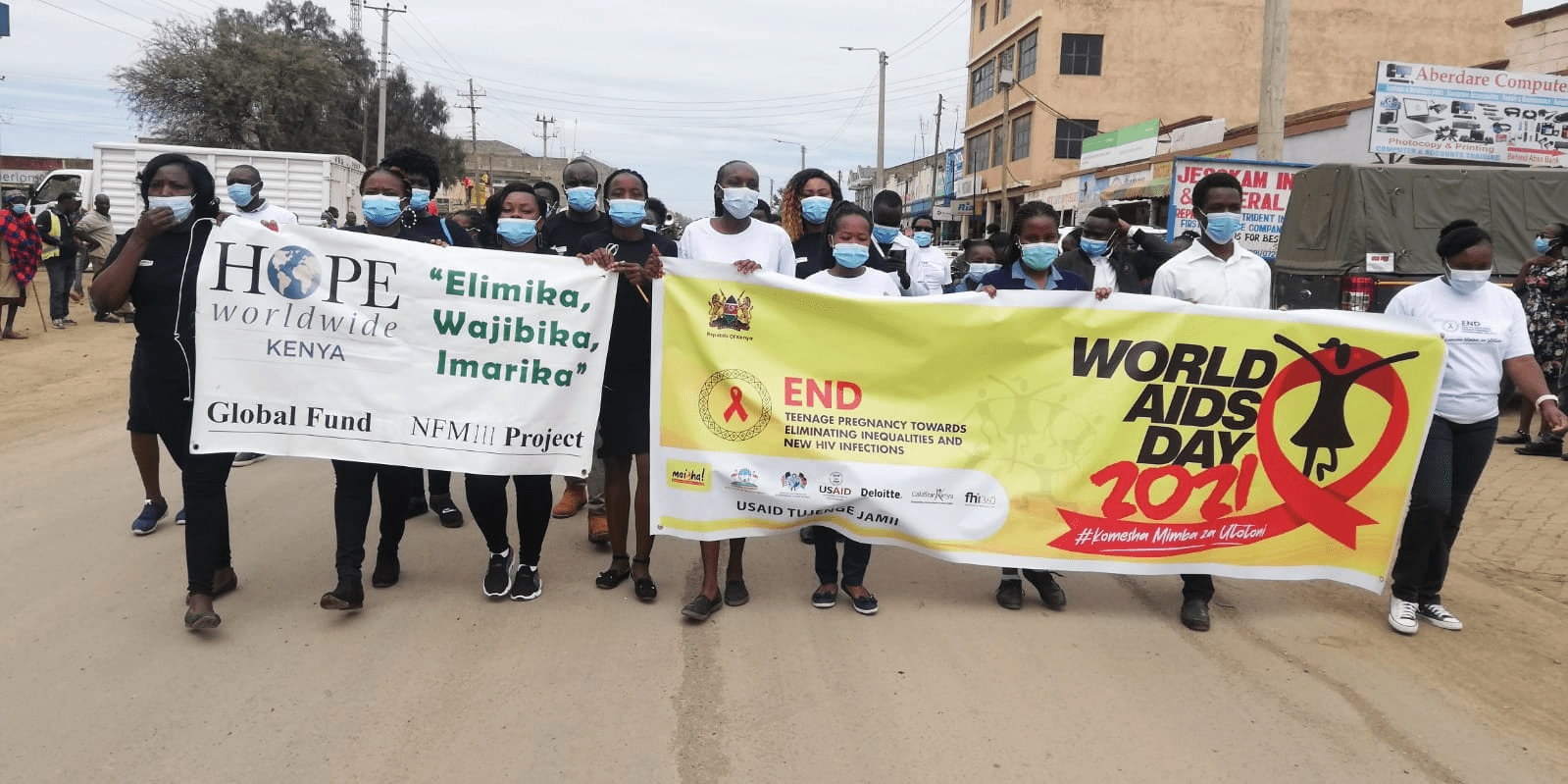
01.
DREAMS CONNECT Project
HWWK through a sub-grant from CIHEB received funding from the US Presidential Emergency Plan for AIDS Relief (PEPFAR) to implement an HIV prevention program among adolescent girls and young women through the Centers for Disease Control and Prevention (CDC).
02.
Start Small Education (Elimu ya Vijana Tuelekeze) Project
HOPE worldwide Kenya (HWWK) through a sub-grant from CARE International in Kenya received funding from the Start Small Foundation through the CARE USA Crisis Response Campaign: East Africa Education Initiative, to implement a two (2) year project to mitigate the effects of COVID – 19 on education.
03.
UON CRISSP KP Project
HWWK is implementing an HIV prevention project to reach Key populations including Female Sex Workers (FSW) with their partners and Men who have Sex with Men (MSM). Funding is provided from the Presidential Emergency Fund for Aids Relief (PEPFAR) through a sub-grant from the University of Nairobi CRISSP project.
04.
SHE SOARS Project
HOPE worldwide Kenya (HWWK) received funding from Global Affairs Canada through CARE International in Kenya for the SHE SOARS Campaign. SHE SOARS is an acronym meaning:
- Sexual and reproductive Health and Economic empowerment (SHE)
- Supporting Out of school Adolescent Girls’ Rights and Skills (SOARS)
05.
Global Fund HIV Project
HWWK is implementing a HIV Global fund grant through a sub-grant from Kenya Red Cross Society under the New Funding Mechanism 3 (NFM3).
The grants key areas of interventions are:
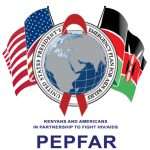

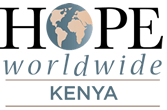
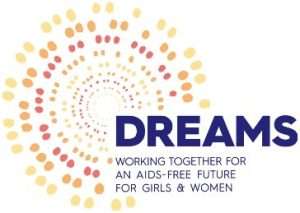 DREAMS CONNECT Project Brief
DREAMS CONNECT Project Brief
Introduction
HWWK through a sub-grant from CIHEB received funding from the US Presidential Emergency Plan for AIDS Relief (PEPFAR) to implement an HIV prevention program among adolescent girls and young women through the Centers for Disease Control and Prevention (CDC). The project is dubbed ‘DREAMS’ which means Determined, Resilient, Empowered, AS-free, Mentored, and Safe lives.
The DREAMS CONNECT is the name used for the 2nd phase of its implementations. The project phase is a 5 year project cycle starting from October 2021 to September 2026.
The project will support 77,000 Adolescent Girls and Young Women (AGYW) the ages 9-24 years living in informal settlements in Nairobi.
Geographical Scope
DREAMS CONNECT is implemented in 31 wards in 13 Sub-counties in Nairobi as follows:
| Sub – County | Ward | Office Location |
| 1. Embakasi South Sub-County | 1. Mukuru Kwa Ruben | Town: Mukuru, Nairobi Building: Mukuru Center of HOPE Street: Falcon Road Nearest Landmark/street: Mukuru Police Post |
| 2. Makadara Sub-County | 2. Viwandani | |
| 3. Starehe Sub-County | 3. Nairobi South 4. Landimawe | Town: Nairobi South/ Land mawe, Nairobi Building: KCB building Ground floor and 5th floor Street: Along enterprise road Nearest Landmark/street: Mater Hospital |
| 4. Kamukunji Sub-County | 5. Eastleigh South | Town: Kiambiu office within Calvary Temple Church, Buruburu, Nairobi Nearest Landmark/street: Near Buruburu Police Station |
| 5. Ruaraka Sub-County | 6. Mathare Utalii 7. Mathare North | Town: Utalii, Nairobi Building: Amani Housing Street: T- Area Nearest Landmark/street: Opposite National Youth Service |
| 8. Korogocho | Town: Korogocho, Nairobi Building: MAWOC Building Street: Along Chiefs camp street Nearest Landmark/street: Korogocho Chief’s Camp | |
| 6. Mathare/Starehe Sub-county | 9. Huruma 10. Ngei 11. Kiamaiko | Town: Huruma Office within Jowanga Hotel, Nairobi Building: Opposite Jumuia Hospital Nearest Landmark/street: Jowanga Hotel |
12. Mathare Hospital 13. Mabatini | Town: Mathare Hospital, Nairobi Building: Pool Master Building Street: Opposite Moi Airbase next to Shell Petro Station Nearest Landmark/street: Moi Airbase | |
| 7. Embakasi Central Sub-county | 14. Kayole North, 15. Kayole South, 16. Kayole Central, 17. Matopeni/Spring Valley | Town: Kayole , Nairobi Building: Koma view Apartment Street: Kayole Junction Nearest Landmark/street: Signage for Glorious Evangelist Church |
| 8. Embakasi East Sub-county | 18. Tassia | Town: Tassia, Nairobi Building: Laiboni Court Nearest Landmark/street: Laiboni Court next to Blue Villa Flats |
19. Upper Savannah 20. Lower Savannah, 21. Mihang’o | Town: Savannah, Nairobi Building: Albeg Apartment Street: Along Kayole Spine Road Nearest Landmark/street: Opposite Mwangaza Primary School | |
| 9. Lang’ata Sub-county | 22. Laini saba 23. Makina | Town: Kibera, Nairobi Building: Kibera DC Compound Street: Ngong Road Kibera drive in Road Nearest Landmark/street: Huduma Centre Kibera |
24. Lindi 25. Sarang’ombe | Town: Kibera, Nairobi Building: St. George Orthodox Church Street: Bombolulu road/stage Nearest Landmark/street: Near Safaricom Shop | |
| 10. Dagoretti South Sub- County | 26. Ng’ando | Town: Kimbo Village, Nairobi Building: Suna Estate Nearest landmark/street: Next to SDA church |
| 11. Dagoretti North Sub- County | 27. Kawangware 28. Kabiro 29. Gatina | Town: Kawangware, Nairobi Building: Sokoni Arcade Street: Mlango Soko Nearest landmark/street: Penda medical center |
| 12. Westlands Sub- County | 30. Kibagare/Kitisuru | Town: Nairobi Building: Mshegwe at Pastor Amos church Nearest Landmark/street: Next to Kibagare Mosque |
| 13. Embakasi North Sub-County | 31. Kariobangi North | Town: Landmark area- Kariobangi North, Kamunde Road, Nairobi Building: Patreva Heights- 3rd Floor. Street: Kamunde Nearest Landmark/street: PCEA- Kariobangi North Academy- Kamunde Road |
Objectives
This Project supports the scale-up of combination HIV/AIDS prevention services for Adolescent Girls and Young Women (AGYW) living in the informal settlements of Nairobi
The program main objective is to reduce/eliminate new HIV infection among AGYW.
.The services for AGYW are provided in four categories as outlined in the DREAMS comprehensive package of services. These services included:
- Services that directly empower AGYW
- Services that mobilize communities to support and protect AGYW
- Services that strengthen AGYW’s families
- Services that target AGYW male sexual partners to decrease the risk of acquiring HIV
Specific activities / services include:
- HIV Education, Counseling and testing services
- Behavior Change Communication through Evidence-Based Interventions (EBIs) such as Healthy Choices for a Better Future (HCBF), My Health My Choice (MHMC) and Families Matter Program I &II
- Risk reduction counselling
- GBV screening and subsequent Post Violence Care
- STI Screening, family planning, Condom promotion, education and provision
- Pre and Post Exposure Prophylaxis for young women
- Education Subsidies to those in school
- Combination Socio-Economic Approaches Support including
- Financial capability training, entrepreneurship training ,vocational skills training, linkage to employment, linkage micro finance and business start-up kit
- Male Sexual Partners characterization, linkage to VMMC and provision of HIV testing, care and treatment services and STI screening.
- Community Mobilization and Norms Change through SASA
- Social Asset Building
HCBF is used to teach AGYW aged 10 to 14 years and their male peers through trained facilitators from the community.
MHMC is used to reach AGYW aged 13 to 17 years and their male peers through a team of trained facilitators in out-of-school settings.
SASA is a community based intervention aimed at changing community norms that hinder young women and girls from achieving their highest potential and creating a more enabling environment. Facilitators are drawn from the communities where the girls live.
FM I & II: This intervention targets parents and caregivers of 10-14, and 15- 19 year olds to improve parent-adolescent communication, especially on sexuality.
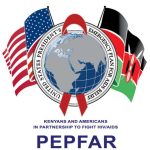


UON CRISSP KP Project Brief
Introduction
HWWK is implementing a HIV prevention project to reach Key population including Female Sex Workers (FSW) with their partners and Men who have Sex with Men (MSM). Funding is provided from the Presidential Emergency Fund for Aids Relief (PEPFAR) through a sub-grant from University of Nairobi CRISSP project.
Project goal: To Increasing Access to and Availability of Sustainable, High Quality, Comprehensive Health and Structural Interventions among Key Populations and Priority Populations in Central, and Eastern Regions of the Republic of Kenya under the President’s Emergency Plan for AIDS Relief (PEPFAR)
Geographical Scope
Kirinyaga, Embu, Tharaka Nithi Counties in central and upper eastern regions of Kenya
Strategic objectives
- SO1: Increase coverage and access to sustainable, high quality, comprehensive health and structural Interventions among KPs in Kirinyaga , Embu and Tharaka Nithi counties by September 2022
- SO2: To improve responsiveness of healthcare systems to Key population in Kirinyaga , Embu and Tharaka Nithi counties by September 2022
A combination approach including Behavioral, biomedical and structural interventions is used to achieve a comprehensive package of HIV prevention services.
Services are provided through Key population DICEs that are co- located at County Health Facilities and through outreaches at identified Key population hotspots.
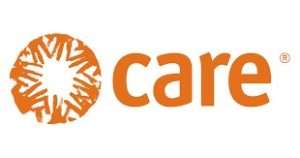

Start Small Education (Elimu ya Vijana Tuelekeze) Project Brief
Introduction
HOPE worldwide Kenya (HWWK) through a sub-grant from CARE International in Kenya received funding from the Start Small Foundation through the CARE USA Crisis Response Campaign: East Africa Education Initiative, to implement a two (2) year project to mitigate the effects of COVID – 19 on education. The project aims to ensure that adolescents (10-19 year old) in school stay in school and are able to transit to the next grades/classes or higher levels of education. The Project will do this by training teachers to provide mental health and psychosocial support to adolescents, empower adolescents with knowledge and skills on Adolescent Sexual and Reproductive Health (ASRH), life skills, financial literacy, and development of adolescent leadership competence skills.

Project Duration:
March 2021 to June 2023
Geographical Scope:
Nairobi County (Mukuru informal settlements) and in Kajiado Central sub-County, Kajiado County.
Project overall target:
To reach 31,000 adolescents (10 – 19 years) in school within 130 schools.
Project Goal:
Adolescent girls and boys reach their full potential in Kajiado and Nairobi Counties by 2023.
Objective:
Limit the number of adolescents, particularly girls, at risk of dropping out of school.
Outcome 1: Increased access to education for adolescent girls and boys.
Outcome 2: Improved acceptance of parents and community members on adolescents’ education.
Project Interventions:
- Purchase and supply to schools of COVID-19 prevention supplies (cloth face masks and hand sanitizers).
- Back to school campaign using bulk text messages to adolescents and parents and on Life skills, ASRH and GBV during school holidays
- Capacity building of school guidance & counselling teachers’ on mental psychosocial support in schools, including managing cases of child abuse & SGBV.
- Promote guiding and counselling sessions for adolescents & psychosocial support.
- Back to School, ASRH & GBV outreaches to in school and out of school adolescents
- Establish school groups for adolescents and provide psychosocial support, life skills and ASRH & GBV information, and financial literacy.
- Community sensitization meetings for community leaders and members in the back to school campaigns at Chiefs’ barazas and Church meetings.
- Implementation of VSLA methodology in parents’ group.
As we observe the 16 Days of Activism against Gender-Based Violence, HOPE worldwide Kenya are at the forefront in the fight to end GBV in Kenya.
In this short clip, one of our project staff under the Start Small Project, funded by CARE International in Kenya, explains how HWWK contributes to the fight to end Sexual and Gender-Based Violence experienced by adolescents in Kenya.
As we observe the 16 Days of Activism against Gender-Based Violence, HOPE worldwide Kenya are at the forefront in the fight to end GBV in Kenya.
In this short clip, one of our project staff under the Start Small Project, funded by CARE International in Kenya, explains how HWWK contributes to the fight to end Sexual and Gender-Based Violence experienced by adolescents in Kenya.
SHE SOARS Project Brief
Introduction
HOPE worldwide Kenya (HWWK) received funding from Global Affairs Canada through CARE International in Kenya for the SHE SOARS Campaign. SHE SOARS is an acronym meaning:
- Sexual and reproductive Health and Economic empowerment (SHE)
- Supporting Out of school Adolescent Girls’ Rights and Skills (SOARS)
With an implementation period of seven (7) years, the project aims to empower and improve the Sexual and Reproductive Health and Rights of girls and young women, with specific emphasis on out-of-school adolescent girls.
Geographical Scope
SHE SOARS is implemented in Nairobi and Kajiado Counties
Objectives
The project’s main objective is the increased enjoyment of health-related human rights by the most marginalized and vulnerable women and girls’ rights holders, particularly out of school adolescent girls in Kenya.
Outcome 1:
Increased equitable use of SRHR health services by diverse groups of women, particularly out of school adolescent girls.
Outcome 2:
Improved provision of gender and adolescent responsive, inclusive and accountable health services for diverse groups of women, particularly out of school adolescent girls.
Outcome 3:
Improved effectiveness of women and girls’ rights organizations to advocate for evidence-based, accountable and equitable ASRHR policies, legal frameworks and services.
Specific activities / services include:
- Increase knowledge of SRHR and related life skills of adolescent girls and boys.
- Improve acceptance of adolescent boys and girls, male and female gatekeepers towards adolescent girls’ empowerment, decision-making, and rights to access SRHR.
- Strengthen systems to meaningfully engage adolescent girls and boys to hold duty bearers accountable to deliver gender and adolescent responsive SRHR services.
- Improve skills and attitudes of HCP’s to deliver gender/adolescent responsive comprehensive SRHR services for diverse groups of out of school adolescent girls.
- Strengthen capacity of district/county government to efficiently manage and coordinate gender/adolescent responsive, inclusive, comprehensive and accountable SRHR services.
- Improve gender/adolescent responsive SRHR service delivery models.
- Strengthen knowledge and skills of grassroots, community-based women’s and youth-led rights organizations to hold national duty-bearers accountable for adopting and/or implementing comprehensive ASRHR policies and services.
- Strengthen regional coordination and cross movement-building of grassroots, community-based women’s and adolescent rights organizations to share learning, and influence policies and laws related to ASRHR.
Global Fund - Project Brief
GF NFM3 HIV- KP Project Brief
Introduction
HWWK is implementing a HIV Global fund grant through a sub-grant from Kenya Red Cross Society under the New Funding Mechanism 3 (NFM3).
The grants key areas of interventions are:
- Increasing access and uptake of HIV prevention services and commodities
- Promoting community based approaches to HIV service delivery
- Improving initiation and adherence to treatment
The expected outcomes of the interventions are
- Increase in HIV testing and linkage to care
- Retention in treatment
- Improved viral suppression among PLHIV beneficiaries
HWWK is mandated to reach Key populations with a comprehensive package of HIV prevention, care and treatment services in the selected counties of Kenya as shown in the table below.
Geographical Scope
County | Sub counties |
Nakuru County | Nakuru East, Nakuru West, Gilgil |
Kajiado County | Kajiado East , Kajiado Central |
Laikipia County | Laikipia East , Laikipia North |
Project Goal: Contribute to attainment of universal health coverage through comprehensive HIV prevention, treatment and care for all people in Kenya
Objectives
- Reduce new HIV infections by 75%
- Reduce AIDs related mortality by 50%
- Reduce HIV related stigma and discrimination to less than 25%
HOPE Worldwide Kenya Projects summary January 2022
Name of Project / description | Donor/ funding agencies | Project POC | Geographical coverage | Target populations | Annual targets |
NFM 111 Global fund – HIV 1.Comprehensive HIV Prevention for Key populations
2.HIV PMTCT, Care and Treatment for general Population | Kenya Red Cross Society (KRCS) – GF | Rose Kuria
| Nakuru, Kajiado, Laikipia Counties
Meru, Isiolo counties | Key Population (FSW, MSM, PWIDs and TG)
GP – PLWHIV | 17,584 (FSW 13,798 MSM 3,481 PWIDs 104 Transgender 201) |
NFM 111 Global fund – TB TB care and treatment for General Population | AMREF – GF
| Roselyn Nyakundi | Kitui and Tharaka Nithi Counties | GP | TB Contact tracing 4.473 linkage to treatment 168
|
HWWK- UON CRISSP –KP Comprehensive HIV prevention Key populations | UON CRISSP -CDC | Catherine Mukundi | Kirinyaga, Embu and Tharaka Nithi Counties | Key Population (FSW, MSM) | 11,305 KPs (6,594FSW 4,711MSM) |
CONNECT- HWWK DREAMS (Empowerment and HIV prevention for Adolescent girls and young women) | CIHEB-CDC | Faith Kamau | Nairobi (13 sub counties – 31 Wards) | Adolescent Girls and Young Women | 77,381 AGYW |
START SMALL Education PROJECT (SSEP) “Elimu ya Vijana twendeleze” (Empowerment for In-school adolescent girls and boys ) | Care International Kenya | Hannah Njoki | Nairobi – Mukuru Kajiado – East & Central sub-counties | Young People | 31,000 Adolescents 80 VSLA groups 130 Teachers trained |
SHE SOARS Empowerment on SRHR for out-of-school adolescent girls | Care International Kenya – Global Affairs Canada | Catherine Mukundi | Nairobi – Mukuru Kajiado – East & Central sub-counties | Out of School Young People | 38,800 Girls 25 Girls groups /YSLA 10 Boys YSLA |
JAM QUEST Education for young people | Jam Quest | Tabitha Muia | Kenya, Uganda and South Sudan | In school Youth | *17 students |
KYEOP (Kenya Youth Employment and Opportunities project) · Closing out | World Bank | Tabitha Muia | Kitui, Nakuru, Nairobi
| Youth | *251 Youth |
KENYA KIDS Education support for children and youth | Individual donors | Faith Kamau | KENYA
| Needy In school Children and young people | *225 Children |
|
|
|
|
| *Targets determined by available funds |
Nuru II
This project seeks to increase access to and availability of sustainable, high quality, comprehensive health and structural interventions among key populations and priority populations in Nairobi, Central and Eastern regions of Kenya under PEPFAR.Funder
The United States Department of Health and Human Services – Centers for Disease and Prevention (CDC)
Locations
- Uasin Gishu
- Machakos
- Embu
- Kirinyaga
- Nyeri
- Meru
- Tharaka Nithi
- Kitui
- Makueni
- Muranga
DREAMS
This project supports the scale-up of combination HIV/AIDS prevention services for Adolescent Girls and Young Women (AGYW) living in the informal settlements of Nairobi in the Republic of KenyaFunders
The United States Department of Health and Human Services – Centers for Disease and Prevention (CDC)
Location
- Mukuru
- Tassia
- Kiambiu
- Landi Mawe
- Viwandani
- Mathare (Hospital and Mabatini)
- Nairobi South
The Road Towards an HIV free society – Global Fund New Funding Model
This project implements combination HIV prevention services targeting key populations and expectant mothersFunders
Global Fund Grant through Kenya Red Cross
Location
- Kajiado
- Nakuru
Nilinde Project
This Project helps promote family focused support to OVC through implementing more sustainable activities. It addresses household economic vulnerability, empowering caregivers to make investments to improve the health and well-being of OVC, facilitated access to essential services, and strengthened community-level OVC monitoring and support systems.Funders
USAID through Plan International
Locations
- Kayole
- Dandora
- Ruai
- Tassia
Bold Idea For Girls (BIG)
This projects seeks to improve the HIV protective behavior among girls aged 15-24 years and reduce barriers with the aim of improving health outcomes, through addressing its social and economic determinants.Funders
Grand Challenges Canada
Locations
- Mukuru
- Dandora
- Kayole
Bridge To Empower Girls In Nairobi (BEGIN) Project
This project provides teenage girls who are pregnant and/or nursing children between the ages 0-3 years living in Mukuru Slum of Nairobi with knowledge and skills using a three-pronged approach that incorporates the scientific ( measurement of development milestones using the ages and stages tool), social ( through sister walks) and economic interventions (vocational and entrepreneurship skills training). The main goal is to promote their children’s brain and overall development.Funders
Grand Challenges Canada
Locations
Mukuru
HOPE worldwide Canada
Donations from HOPE worldwide Canada supports OVC to get school fees, school uniforms, Early Childhood Development toys, reading materials and sanitary towels.Funders
HOPE worldwide Canada
Locations
Mukuru
Adolescent Empowerment Program
This program works with school going and out of school male and female adolescents by providing Sexual Reproductive Health (SRH) services, Economic Strengthening, providing access to Information Communication and Technology (ICT), and promoting education uptake among 10-19 year olds.Funders
CARE Kenya
Locations
Mukuru
Kenya Kids
This project offers education support to OVC and sanitary towels to AGYW in Nairobi. The project also gives support to caregivers to start income generating activities promoting economic stability of vulnerable families.Funders
Individual sponsors through an initiative by the Triangle Church of Christ in the U.S.
Locations
- Kibera
- Kawangware
JamQuest
This Project supports OVC in secondary schools with school fees and school uniforms.Funders
JamQuest
Locations
Mukuru
Stephanie and Lawrence Flinn, Jr. Charitable Trust
Donations from SLF supports OVC in secondary schools with school fees and school uniforms. They also support blood donor mobilization activities as part of the HWWK blood safety program.Funders
Stephanie and Lawrence Flinn, Jr. Trust
Locations
Gacharage
HOPE Youth Corps (HYC)
HYC is a service-learning program originally designed for high school and college students. Kenya periodically hosts volunteers from HYC in partnership with HOPE worldwide. HYC participants serve needy communities through various outreach efforts and community maintenance activities like renovating OVC homes, food donations, sanitary towels donations among other services.Funders
HOPE Youth Corps
Locations
Gacharage
Regional PsychoSocial Support Initiative (REPSSI)
Continued partnership with REPSSI offers beneficiaries Open and Distance learning to enhance Psychosocial Support and quality care to childrenFunders
Regional PsychoSocial Support Initiative (REPSSI)
Locations
Mukuru
